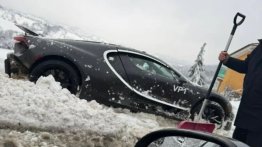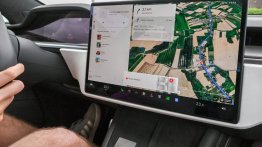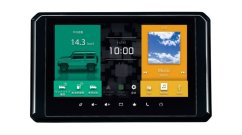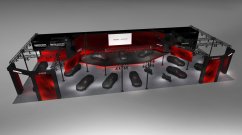Most of our mainstream vehicles have an FWD layout, with no advanced features to help you drive on challenging surfaces. Even most of our SUVs miss out on the 4WD hardware, which is mostly because of its low utility for an average car user. That said, many people often think that they can conquer just about any terrain with a car that has a considerably high ground clearance and a rugged styling package. In reality, however, some places can get the better of even the most capable SUVs. Here is a list of 7 places one should avoid driving to -
Mud & Slush
Whether it's in a grassy car park or during a bit of an off-road driving during your trip to the countryside, finding your car stuck in mud can pose to be a big problem, especially if you are alone and there's no one nearby to assist you. Having your vehicle stuck in mud not only wastes your precious time but calling the roadside assistance to tow your car out just adds to the expense. Even 4WD-equipped vehicles tend to get bogged down when driven on the loose soil. Driving through slush can be even trickier as the gooey stuff can easily trap the wheels of a vehicle. It's in your best interest to avoid driving through slush, especially if your car isn't equipped with 4WD.
Also Read - 9 Tips for safe driving through hills and mountains
Beach
While driving on the beach might sound exciting to many, you could be calling for trouble by taking your car near the sea. While some beaches offer solid surfaces to let a vehicle be driven on it, most of them hold enough loose sand to trap even a capable SUV. The wheels of a car have a tough time gaining traction in the loose sand. As seen in the above video, even a capable SUV like the Range Rover Sport can have a tough time dealing with the treacherous surface.
Desert
Driving in the desert demands a high skill and a highly capable 4WD vehicle. Moreover, the tyre pressure should be reduced to ensure maximum contact area between the rubber and the tricky surface. Even a sudden change in direction is not advisable. More importantly, it's a terrible idea to try driving an FWD vehicle in the desert. Here is a video that shows a Toyota Fortuner, which is a capable SUV, struggling in a desert.
Also Read - 12 BAD habits that the average Indian driver is guilty of
Snow
While driving on snow sounds to be an exciting proposition, one can quickly get his or her car stuck in the 'white gold'. Driving on the fresh snow is still quite easy, but things can get extremely tricky once the snow has hardened. Vehicles easily lose traction on the hard snow. Most of our cars do not feature a 4WD system and hence, can easily get bogged down when driven over snow-covered surfaces. Hence, it's best to avoid driving on snow unless your vehicle features four-wheel drive and snow chains.
Water-logged streets
Water-logging of streets is a common problem in the low-lying areas of many cities. Water can inflict permanent damage to your car's engine. A Hydrostatic Lock is primarily a condition when the motor of your vehicle stops working due to water seeping into the system. Driving your car through water-logged streets can even result in the damaging of piston rods.
Also Read - 10 things you need to know about the AMT (Automated Manual Transmission)
Railway tracks
One should drive over the railway tracks only at the designated railway crossings and only after receiving the green signal by the traffic controller. Trying to drive over railway tracks at non-designated places can be a bad idea as your car can quickly get stuck in the track ballast, which is basically the crushed stones that are present alongside the railway tracks. Things can get sticky
Water crossings
While crossing the water could look tempting, it can get hazardous if the water level is high enough to enter your car's air intake.
Also Read - Here are 10 effective methods to increase your car's tyre life
Moreover, the high force of flowing water can even result in the driver losing control over the car. Hence, it is always a good idea to check the force of water and the dept before attempting to cross a water stream. The 4WD model should be engaged in vehicles that come equipped with it.












